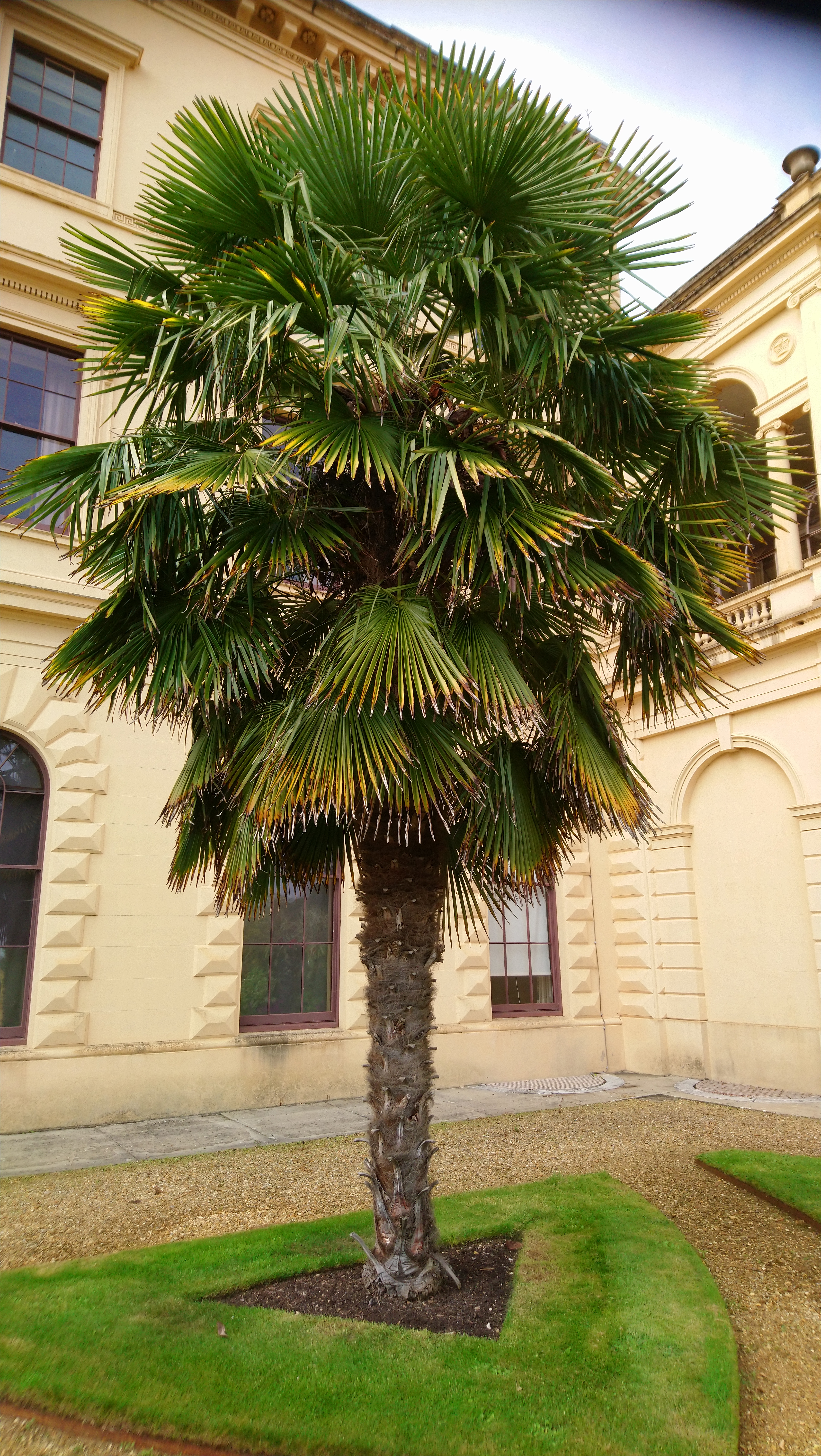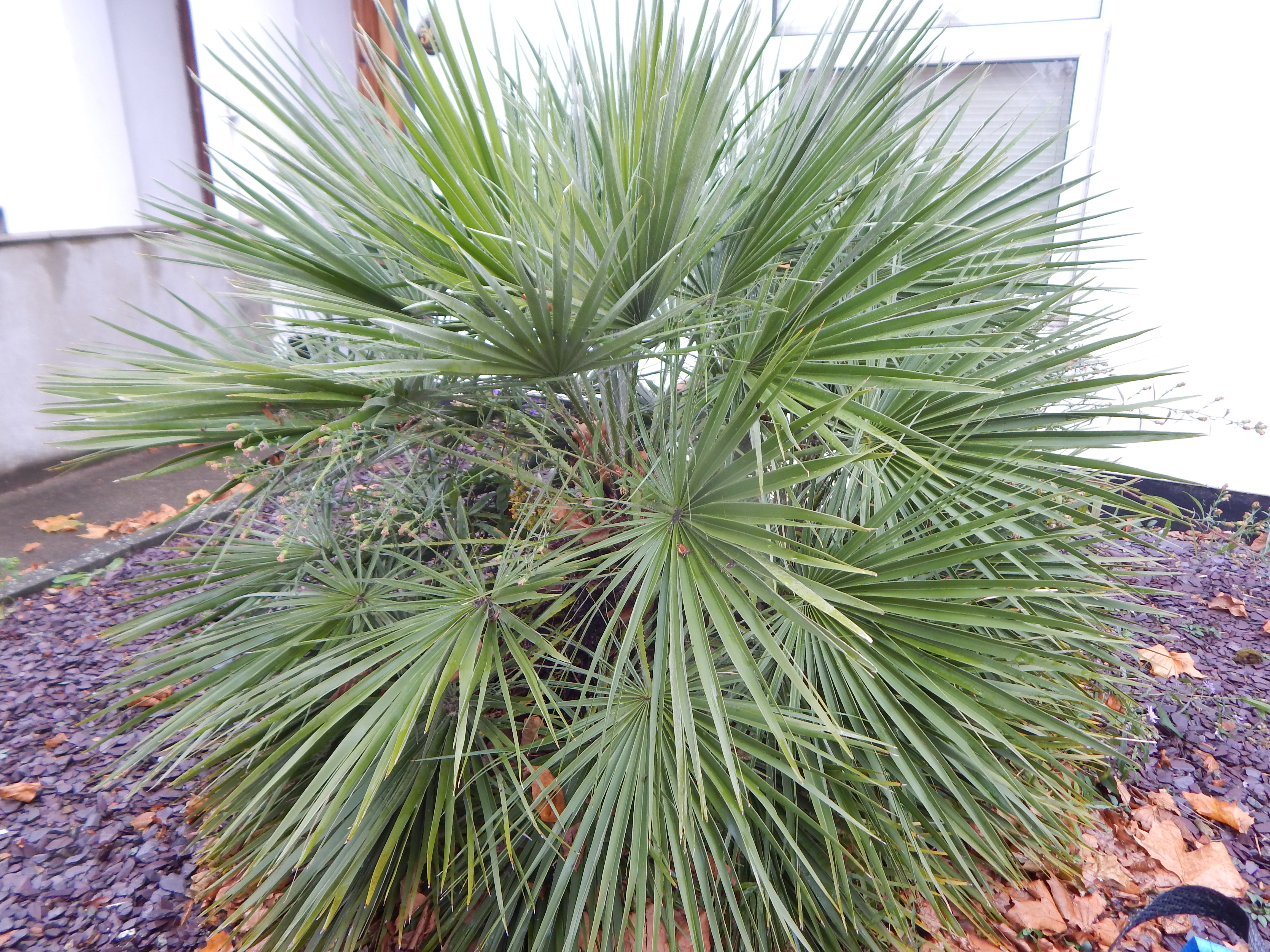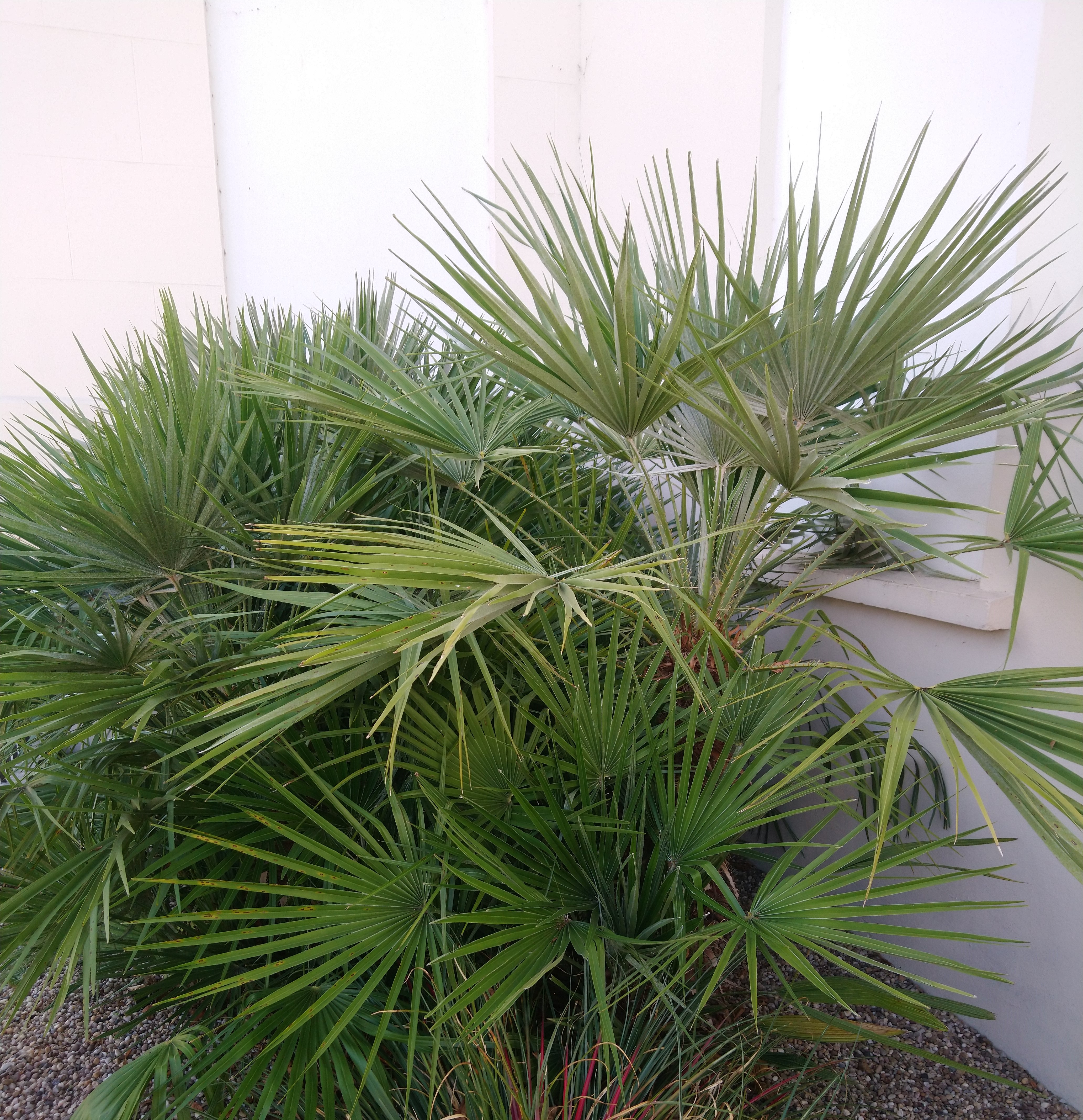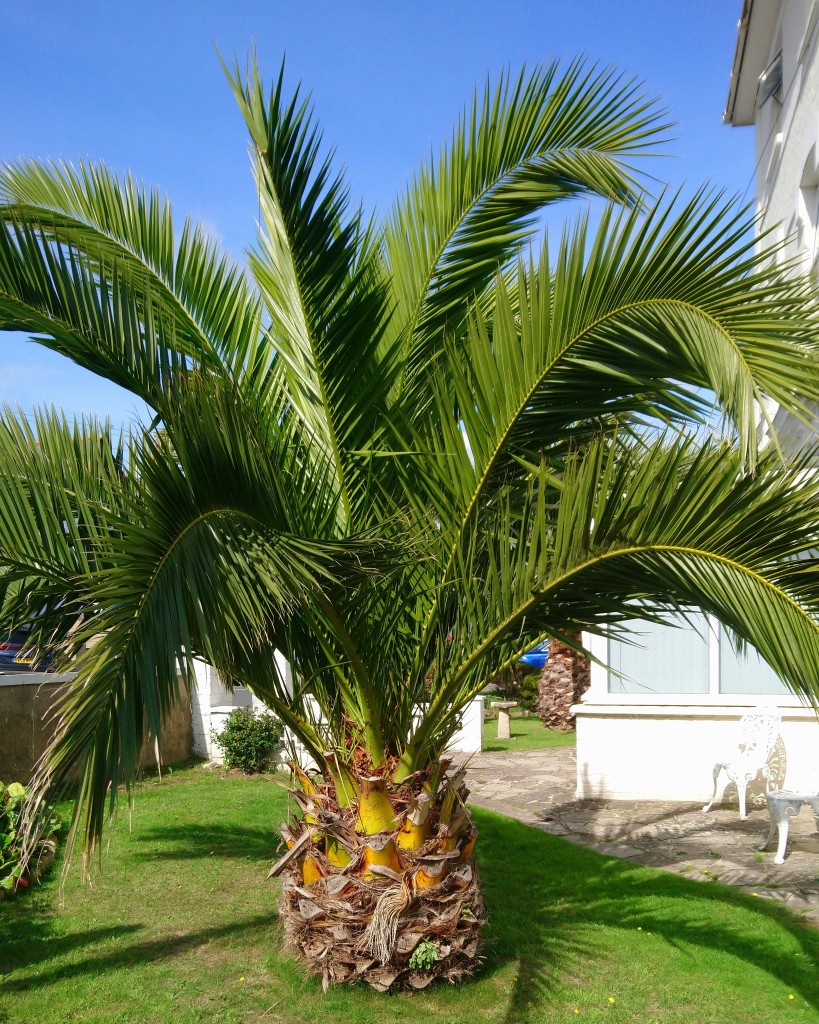
[342] Trachycarpus fortunei, Chusan Palm
Introduction
Trachycarpus fortunei, theChusan Palm, is the most northerly species of cultivated palm. With recent changes in climate, it is increasingly seen as a cultivated garden plant in the UK but it is more likely to be seen in the warmer climates of southern coastal towns. It is also known as the (Chinese) Windmill Palm.
All species in the order Arecales are called Palms or Palm Trees and those in the subfamily Coryphoideae may be called Fan Palms.
Taxonomy
Kingdom – Plants
Division – Vascular Plants
Class – Angiosperms (Flowering Plants)
Clade – Monocots
Order – Arecales (Mostly Palms)
Family – Arecaceae (Palms)
Subfamily – Coryphoideae (Fan Palms)
Tribe – Trachycarpeae
Genus – Trachycarpus
Scientific Name – Trachycarpus fortune
Cultivars are available.
Name
‘Palm’ in reference to a plant is cognate with its use for the part of the hand. Both usages come from Classical Latin and earlier roots.
This plant was first seen by Robert Fortune in Chusan Island, now known as Zhoushan Island in the East China Sea. The Chinese zhoushan means boat, referring to the shape of the island. You will remember some of the problems in the transliteration of Chinese from [025] Hubei Anemone.
Trachycarpus comes from Ancient Greek trachus/trachys, rough, and karpus, fruit, from the hairy fruit of some species.
Robert Fortune (1812-1880) was a Scottish botanist who introduced many plants from China and Japan to Britain, Australia and the USA as garden plants.
Palms
All taxonomy at the moment in botany is changeable and sometimes disputed. The order Arecales contains all the palm species in the family Arecaceae and possibly one other small family.
There are nearly 3 000 species of palms, including those that produce coconuts, dates and palm oil. They are generally tropical and the ones seen in Britain are mostly specimen potted plants in gardens. They may reach their full stature in isolated areas of relatively warm climate such as south facing coasts.
We saw a little about monocot trees in [093] New Zealand Cabbage Tree. They don’t form annual tree rings like other trees but they do have another mechanism for secondary growth. When palms do become palm trees, the trunk is long, straight and cylindrical with no branches.
The leaves of palms are evergreen and they are generally compound – either pinnate or palmate – with many long, thin leaflets, spirally arranged at the top of the stem.
I feel the time has come for a note about botanic terminology. (Yes, I know, it’s a bit late. If you have been following avidly, think of it as a reminder.) Botanists talk of a ‘compound leaf’ consisting of several ‘leaflets.’ In ordinary parlance the individual leaflets would be called leaves. Here is part of one example of a Pinnately Compound leaf from a Date Palm (Phoenix species),

We may see it as lots of very long, thin pointed leaves but it’s just one compound leaf. For Date Palms you can expect about 150 leaflets to each leaf. Pinnate means feather-shaped.
Here are two Palmately Compound leaves.


Palmate means hand-shaped but with so many leaflets it makes sense to think of them as fan-shaped. All the leaflets come from the same point at the end of a long petiole. Palms have many more leaflets than other species with palmate leaves such as [008] Horse-chestnut.
As a first approximation, species in the Fan Palm family Coryphoideae are palmately compound Fan Palms and the others are pinnately compound. But, as you may have guessed, there are exceptions both ways.
You can also divide palms into two types by their ‘habit’ – a posh botanical word for shape or structure. We think of palms as trees with all the growth spread out at the top. This is solitary growth. The other type is clustered growth, where growth occurs nearer the base to form a bushier structure. Of course, it won’t surprise you that some genera have both types and some species can occasionally change their type!
Chusan Palm
Trachycarpus fortunei is a single-stemmed fan palm. (That’s palmately compound and solitary growth.) It can grow to twenty metres but in the UK is unlikely to be seen more than two or three metres.
As with many palm trees, the trunk is rough and is usually covered with the persistent leaf bases from many years of growth. As new leaves emerge higher up, the old ones die away leaving their bases surrounding the growing trunk.






It has been cultivated for so long that its natural range is difficult to identify but it is from the area of southern China and Japan. It has also been cultivated round the World in subtropical and temperate climates. In the USA this restricts it to the South and extreme west only.
It survives without flourishing in the more southern parts of the UK or in relatively protected garden environments. It has cultivars that are developed for their hardiness.
It has been cultivated for its leaf sheath fibre, used for ropes and sacking. It is widely grown in the UK in parks and gardens and elsewhere, generally as the only palm tree likely to survive.
See also
There are only two other types of palms from the family Arecaceae likely to be seen in Britain. They are less hardy than the Chusan Palm and will only be found in warm or protected areas of microclimate – including greenhouses and as pot plants.
Chamaerops humilis, the European Fan Palm, also in the tribe Trachycarpeae.
It has the most northerly natural range of any palm, coming from Eastern Mediterranean coastal areas. It is a fan palm with clustered growth, so it looks like a bushy version of the Chusan Palm. As a cultivated plant, with many cultivars available, it is usually just a large pot plant.




Phoenix species, Date Palms, in their own tribe, Phoeniceae within Coryphoideae.
These are more like what we think of as palm trees, or at least they would be if they grew to their full height. They have the compound pinnate structure shown above and the solitary habit that makes trees.
Phoenix dactylifera, the main species that produces crops of edible dates, grows to over twenty metres.
[After noting the etymological connection between ‘palm’ and the hand, it is interesting to note the Ancient Greek ‘dactyl’ for finger could also mean the fruit of the Date Palm.]
Cultivated plants in the UK are most likely to be varieties of Phoenix canariensis, the Canary Island Date Palm, but may be other species.
Here is one spotted in the warmer climate of the southern parts of the Isle of Wight.
I have one in a pot in my back garden that is more typical in size. I could say it’s like the top leafy bit of the one above but its actually much, much smaller. It is already three or four years old but only grows about two new (compound) leaves each year.



